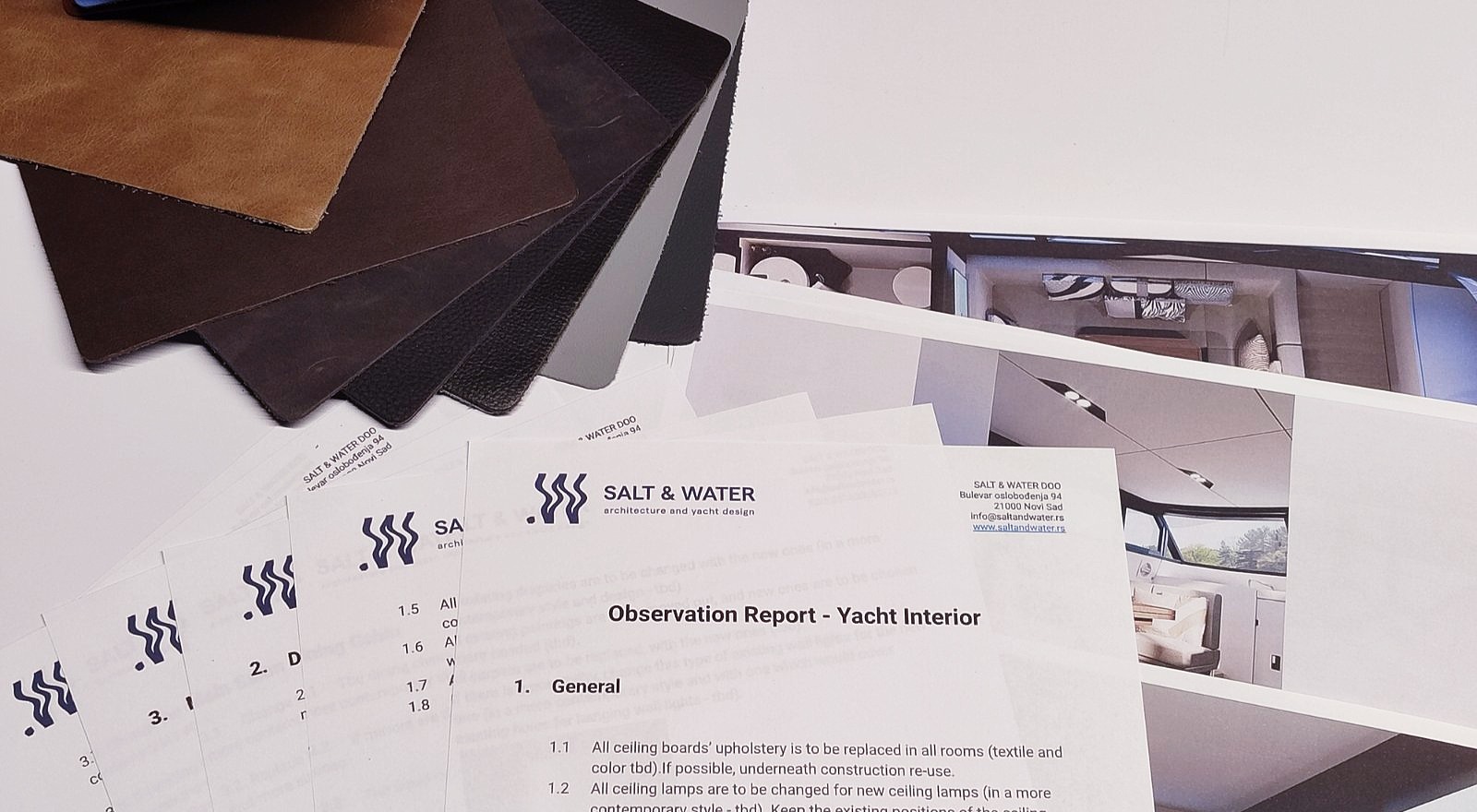Embarking on a yacht refit can be both exciting and daunting. The difference between a smooth, successful renovation and a chaotic, costly one often comes down to preparation. In this article, we delve into why a well-crafted worklist is an indispensable tool for any yacht refit project. From initial inspections to outlining every detail of the interior changes, discover how a comprehensive detailed worklist can keep your project on track, avoid surprises, and ensure every team member knows exactly what to do and when.
When it comes to yacht refitting, having a comprehensive and well-organized plan is crucial. One of the most effective ways to ensure the refit process goes smoothly is by establishing a detailed interior worklist before any work begins. From my years of experience, this document has proven to be the backbone of any successful refit. It guides not only the shipyard but everyone involved—owners, crew, and project managers—on what needs to be done, how, and when.

What is a Worklist?
An interior worklist is essentially a blueprint for the entire interior refit project, focusing specifically on the design and functional changes to the yacht’s interior. This document outlines everything the client wants to achieve, ensuring no detail is overlooked. A comprehensive worklist includes:
- General requirements for the entire interior of the yacht.
- Detailed lists for each specific area onboard (cabins, salon, galley, etc.).
- Defined actions such as replacements, upgrades, or modifications.
- Best practices that need to be followed (if applicable).
- Items yet to be defined or confirmed, marked as TBD (To Be Defined).
The more complete this worklist is at the beginning, the smoother the refit will be. The first part of the worklist usually addresses general requests for the yacht’s interior, such as updating materials, improving lighting systems, or enhancing storage solutions. Once the general scope is established, the worklist breaks down into specific zones.
Each individual space onboard—whether it’s the owner’s suite, guest cabins, or the main salon—needs its own worklist. This includes a detailed breakdown of tasks for that particular area, from wall coverings and furniture updates to any required carpentry or electrical work.
For example, in the master cabin, the worklist might include updating the bedding and curtains, replacing lighting fixtures, and modifying built-in furniture. The guest cabins might require different treatments, such as new upholstery and flooring upgrades. This level of specificity allows every team involved to work on the project in an organized manner, reducing confusion and delays.

The Role of Inspections Before Worklist Creation
Before a worklist can be drafted, a detailed inspection of the yacht’s interior is necessary. This inspection serves as the foundation for creating the worklist, ensuring that both the client’s wishes and the actual conditions of the yacht are accounted for.
During this phase, the captain, crew, owner, or owner’s representative—along with the project manager—conduct a survey of the yacht. They list any problem areas or aspects of the interior that require attention. This is where the expertise of an interior designer or interior expert is critical.
For instance, during a survey of a 50-meter yacht, the owner’s representative and I identified the need for new carpets throughout. However, we were unsure whether the existing sublayers beneath the carpets needed attention. We explored all possible scenarios and prepared solutions for each. Once the old carpets were removed, the owner’s representative and the carpet specialist evaluated the sublayers and confirmed they were in good condition. Thanks to our thorough preparation, we avoided unnecessary changes. Although the outcome was ideal, having all options ready ensured that the client felt secure, knowing we had prepared alternatives, defined deadlines for replacements, and budgeted for every possibility.

Avoid Delays with Clear and Defined Worklists
Having a detailed worklist does more than just outline what needs to be done—it prevents delays and unnecessary expenses. As changes to the scope of work can occur during a refit, it’s essential that every alteration is properly recorded in the worklist, and any TBD items are resolved as early as possible.
A detailed worklist allows for comprehensive preparation of logistics, budget, and timeline. By starting early with a well-defined worklist, you have ample time to explore various options and alternatives. Making decisions at the last minute limits your choices, often resulting in less optimal and more costly solutions.
For example, if certain items need to be removed from the yacht and temporarily stored during the refit, it’s crucial to plan and secure a safe storage location in advance. I recall a situation with a 25-meter yacht where the refit was delayed by two weeks because the storage space for removed items hadn’t been arranged until the last moment. This lack of early planning led to significant interruptions in the refit schedule. By having a detailed worklist, a good project manager can avoid such issues, ensuring that all logistics are in place and the project proceeds smoothly without unnecessary delays.
A well-structured worklist serves as a safeguard, preventing those “surprise” changes from becoming costly setbacks.

Ready to Start Your Refitting Journey?
If you’re considering a refit, my team is here to help. We can perform a detailed inspection of your yacht and offer recommendations on how to achieve the greatest results with minimal investment. Whether you want to reflect your personal style or simply make the most impactful changes, we’re here to guide you.
Additionally, we have a network of experienced artisans who have been collaborating with us for years. If you don’t have selected or available experts, our trusted artisans are ready to step in and execute the design seamlessly. Let us ensure your refit is both successful and stress-free.







